Covid-19 decontamination allows safe return of patients
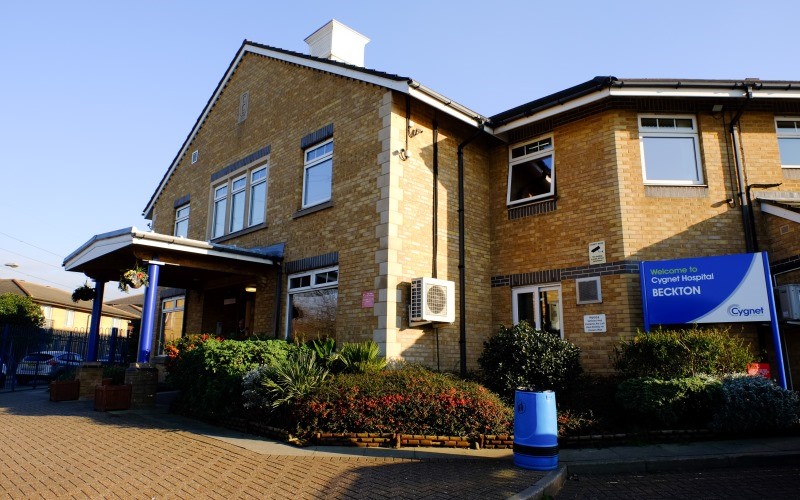
3-stage emergency process returns wards to normality
SUMMARY
Client: Cygnet Hospital, Beckton, London
• Decontamination required after confirmed Covid-19 cases
• Strong focus on the safety and security of staff and patients
• Ideal Response team worked closely with Cygnet’s maintenance team
• Zero rating of RLUs achieved by 3-stage cleaning process
THE CHALLENGE
Where there are confirmed cases of Covid-19 within hospitals, it’s vital that cleaning and decontamination are carried out efficiently, to minimise disruption and allow patients to returns to wards.
The team from Ideal Response were appointed in an emergency capacity to deliver a decontamination service after confirmed cases of Covid-19 in the Hansa Ward of Cygnet Hospital, London.
Our challenge was to rapidly and professionally support the Cygnet’s own maintenance team in reducing contamination which was deemed to be particularly high and therefore of risk to staff and patients. The task was focused – cleaning bedrooms with confirmed Covid-19 status – as well as comprehensive, since communal areas and wards were affected too.
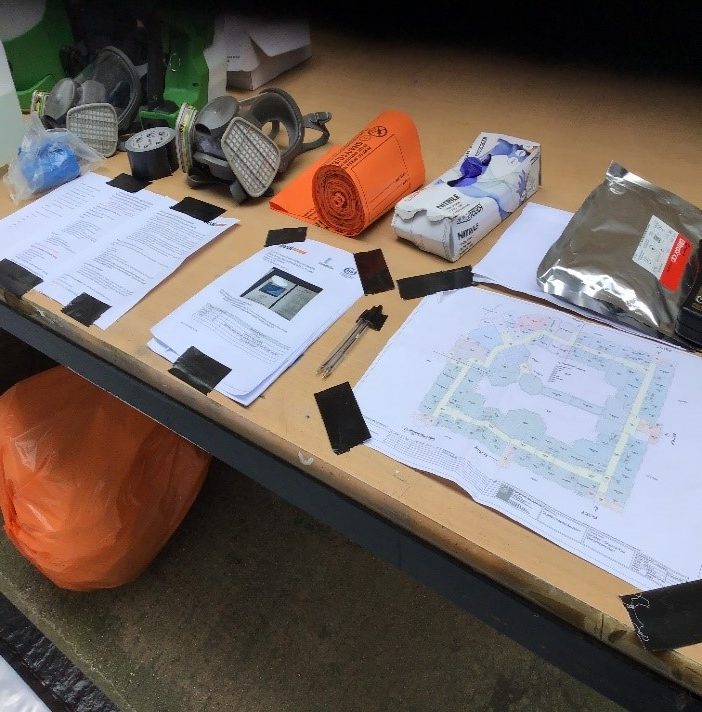
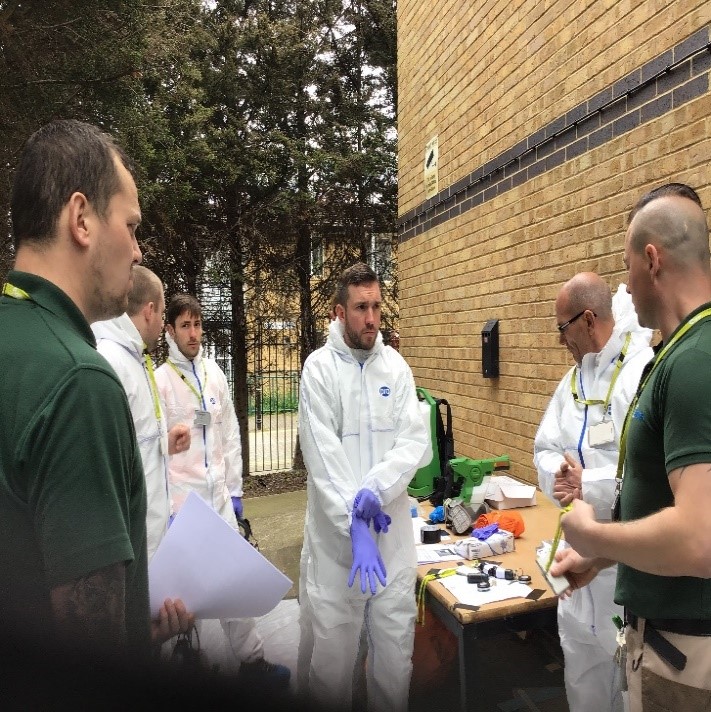
Safety of personnel and detailed planning of the decontamination process were priorities.
THE IDEAL SOLUTION
After a detailed inspection, the Ideal Response team decided to focus on bedrooms, communal areas and then wards, due to differing contamination levels.
In consultation with the maintenance team at Cygnet Hospital, we agreed our All Clear Decontamination 3-stage approach best suited the environment. After numerous safety briefings for technicians and Cygnet staff, work began:
Stage 1: Clear
Our team carried out Adenosine Triphosphate (ATP) testing – a method widely used to test the cleanliness of a surface), before completing the first stage of disinfection in full PPE. The team used electrostatic backpack sprayers, which deliver a precise application to end bacterial, viral and pathogenic contamination. To reduce cross contamination, the team also sprayed themselves down when exiting different areas of the contaminated zone.
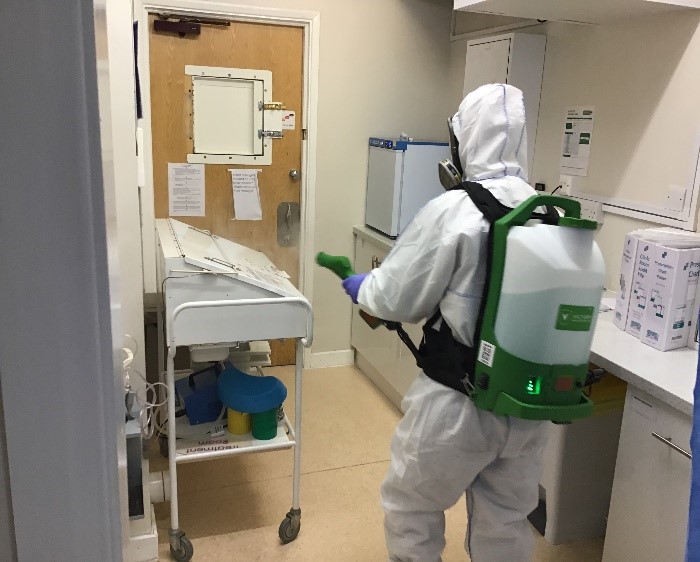
Electrostatic backpack sprayers and an air decontamination unit – which releases ultrasterilised air into contaminated areas
Stage 2: Defend
We used advanced technology to apply an antimicrobial coating to all surfaces in the contamination zone. This creates a microscopic barrier and kills any micro-organisms that land on it, for up to 12 months.
The treatment is effective and safe when applied to fabrics and textiles, so it was used on all surfaces including beds and mattresses.
Air decontamination was also a major element of the decontamination process.
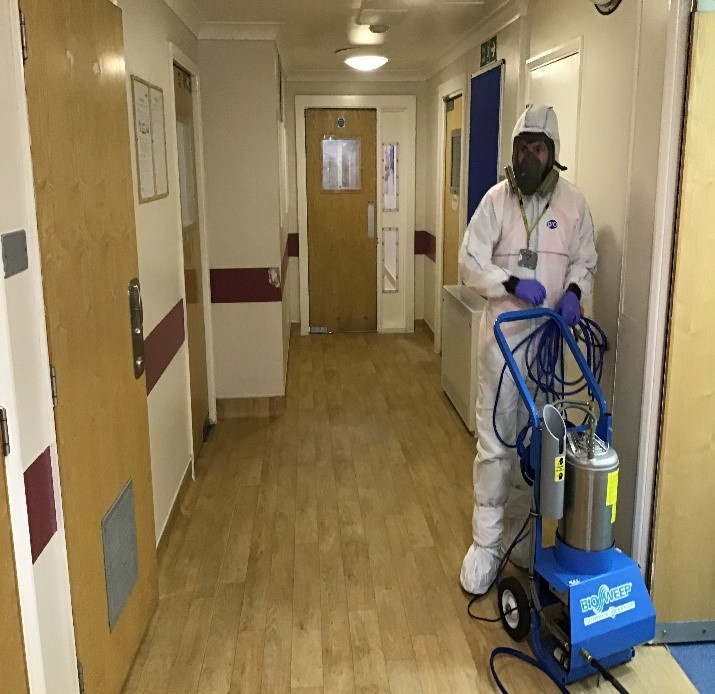
The Ideal Response team cycled air within the treatment area for several hours, using delivery units with High-Efficiency Particulate Air (HEPA) filters. This eradicates odours, bacteria, viruses, Volatile Organic Compounds (VOCs) and suppresses mould spores.
Stage 3: Watch
For Cygnet Hospital, we implemented our continuous decontaminating hygiene monitoring service. Following ATP testing in Stage 1, this allows us to monitor contamination, devise a plan of action and begin decontaminating. Stage 2 applies a residual barrier for further protection and Stage 3 meant we monitored the hygiene levels throughout the decontamination phase as well as after all decontamination services were complete.
BEFORE AND AFTER RESULTS
Our team recorded extremely poor Actual Relative Light results of 1,832 and 1,633 ARLs in high contact areas of contamination, and readings of 627 RLUs in corridor areas of the hospital. Following the decontamination of the ward areas, the Ideal Response team re-tested the areas and achieved an outstanding result of zero RLU’s, making the area safe for patients to return.
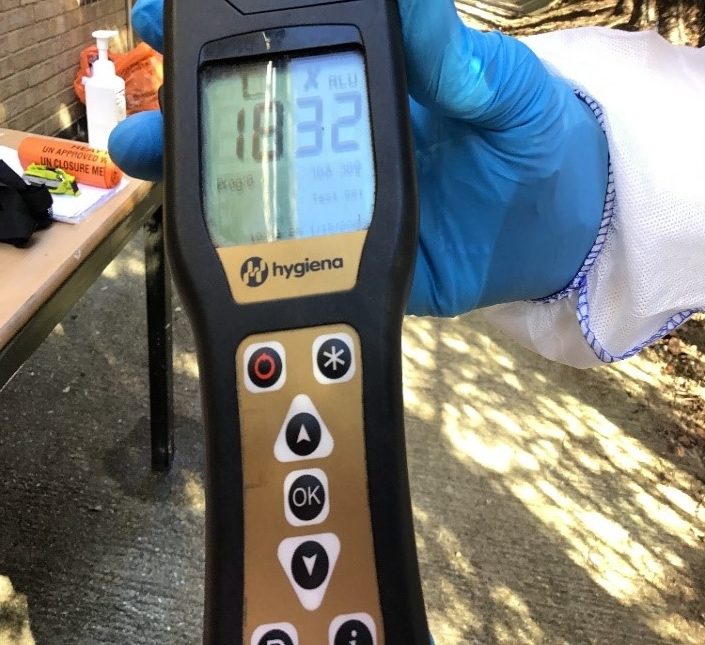
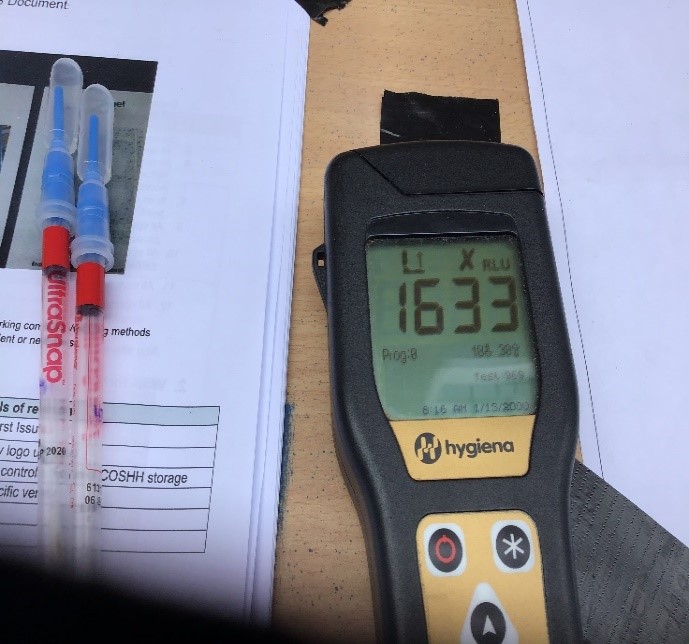
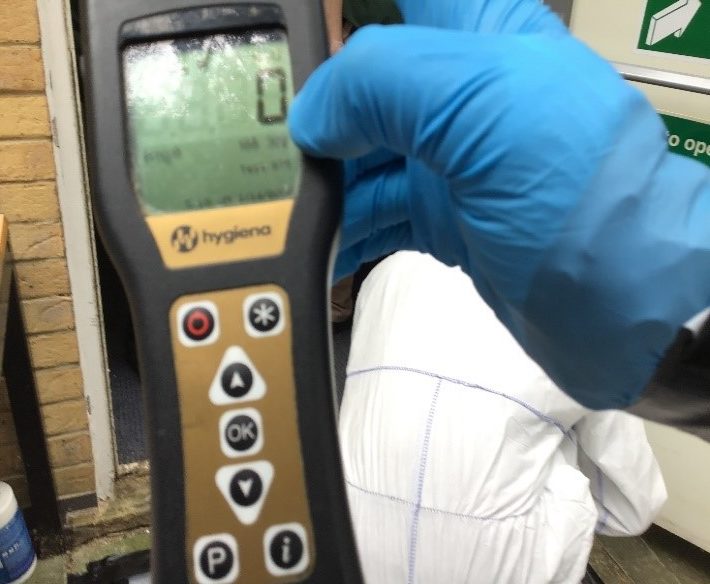
The top reading of 1,832 RLUs was effectively reduced to zero through our comprehensive decontamination program.
Cygnet Hospital is now in the process of using decontamination in other wards due to confirmed Covid-19 cases. Our 3-stage decontamination service offered the ‘belt and braces’ approach that the healthcare sector requires, including future monitoring of contamination levels.
☆☆☆☆☆
“The Ideal team were very professional and safe in their approach to decontaminating our wards. We really feel we’ve created a much safer environment for staff and patients.”
Tim Panther,
Head of Maintenance Team, Cygnet Hospital, London
ABOUT THE CLEANING TECHNOLOGY
To assess the cleanliness of tested surfaces in the ward, Ideal Response experts used Adenosine Triphosphate (ATP) monitoring – a common method for measuring the presence of contamination, including allergens and bacteria. ATP is an enzyme present in all organic material, and when found on a surface it is an indication of improper cleaning and/or the presence of contamination.
We use hygiene luminometers (in conjunction with ATP swabs) to take bioluminescence measurements in Relative Light Units (RLUs). This allows us to rapidly assess the level of cleanliness of environmental surfaces in healthcare and other settings. Our goal is always to reduce RLUs to below 150-200 – and we look to reduce levels below 50 RLUs. In this case our 3-stage process reduced RLUs to zero.
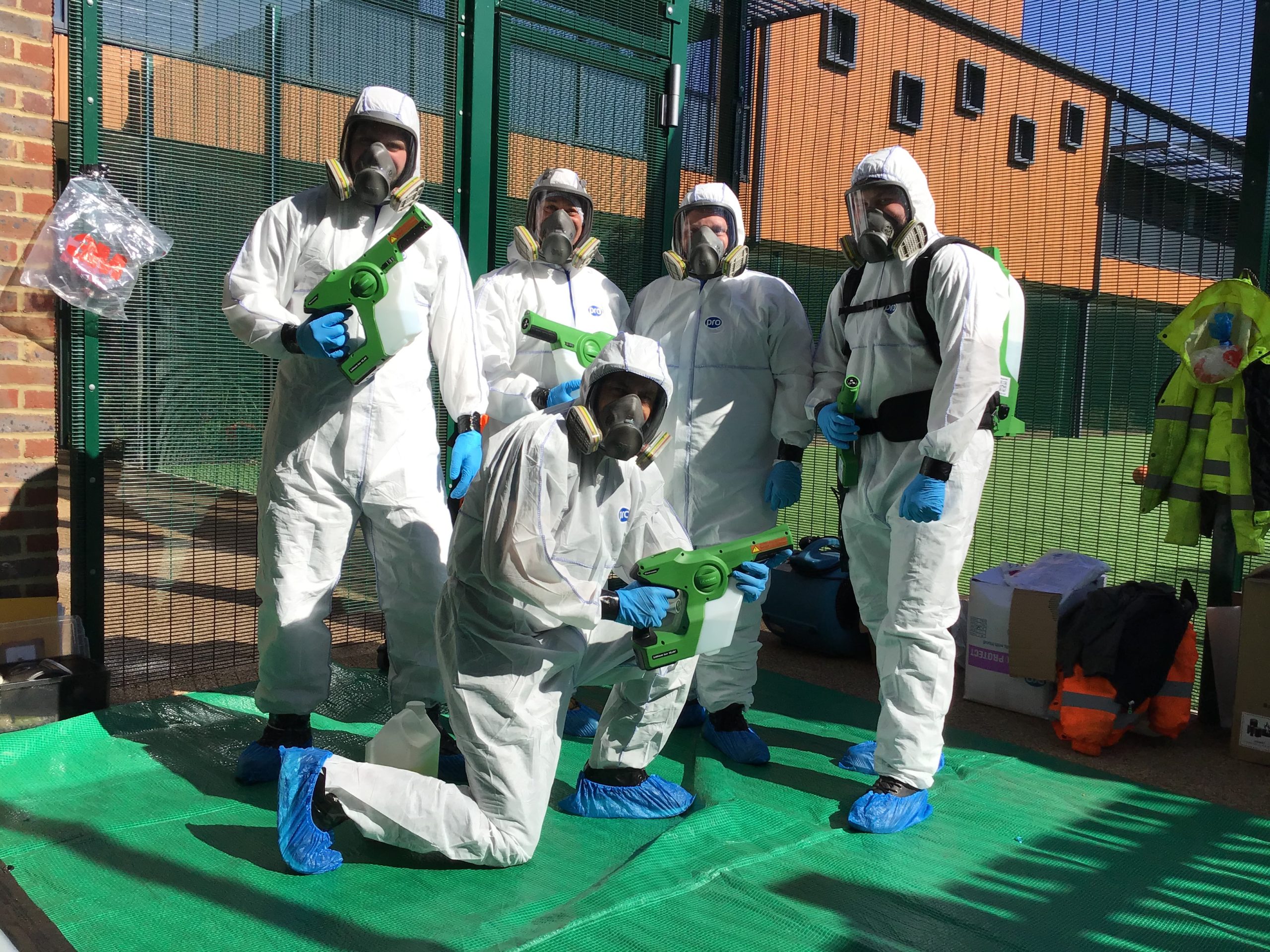

Supporting healthcare and businesses through Covid-19
Our British Disaster Management Association trained technicians work at the forefront of Covid-19 decontamination. Whether it is for hospital wards, schools, care homes, offices or even a private residence, our business is restoring your environment to normal as fast as possible.
Speak to our restoration experts now
01622 926 505Take advantage of our rapid, professional and affordable service by contacting us today.



